Everyone has a dream; a wish they harbour in their heart, hoping someday it may come true. The dream is full of colours and joy, it is a reverie that keeps you floating while your feet are still bound to reality. Because as fascinating the idea of achieving your dreams is, the actual struggle of making your way through reality is drearier. Yet, you can’t be the prudent winner without being a fool who dreams. 2016‘s ‘La La Land’ is all about those fools. Full of Hollywood’s romanticism that’ll sweep you off your feet and marked with the practicality of life that’ll break your heart, Damien Chazelle’s “love letter to LA” is a modern classic that is inspiring, prosaic, passionate and pragmatic, all at the same time. This balance is what allowed it to be one of the best, if not the best, films of the year. A record-breaker at award shows and a money-maker at the box-office, this Oscar winner (though not for Best Picture) is a mandatory watch for any musical lover.
What sets ‘La La Land’ apart from other films in the genre is how meticulously laid out it is. There is one theme of the film that supersedes all others, and you can tell that by the convergence of the characters, the dialogues, the music, and even, the colours towards that. If you haven’t seen it, I suggest you do it ASAP. Why would you want to rob yourself of this experience? If you have watched it, let’s scrutinize the film closely. SPOILERS AHEAD!
Summary of the Plot
At the centre of the story are Mia (Emma Stone) and Sebastian (Ryan Gosling). Both of them are pursuing a dream in LA. She is an aspiring actress and he is a musician who wants to open his club and revive the dying art of jazz. She is bubbly, colourful and easy-going; he is a traditionalist who values the things of the past, and his somewhat stoic demeanour doesn’t make him an easy person to love. These conflicting personalities gravitate towards each other by the shared passion for their individual dreams. They fall in love, boost each other’s morale, keeping the spark alive while facing the brunt of reality. But the same pursuit that had brought them together begins to cloud their future, prodding them to go their separate ways. To make their dreams come true, they have to wake up and face reality.
Different Shades of Dreams and Reality
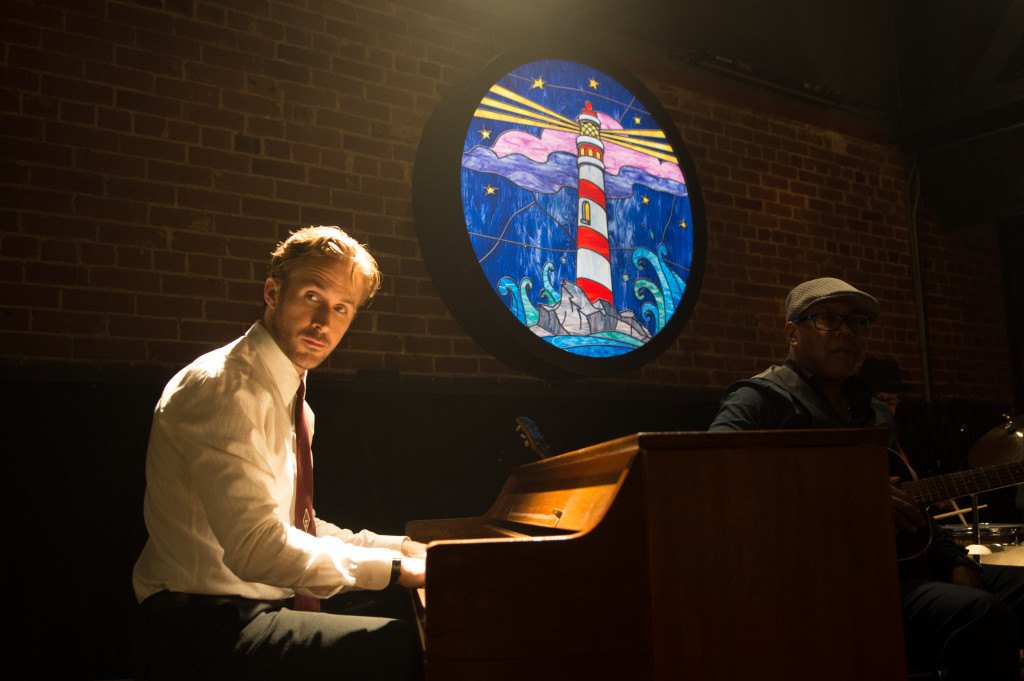
Apart from the exemplary performances by the actors, Chazelle used other tropes to highlight the tone of the story. Along with the music and the lyrics, the colours become a key to reflect the moods of the characters, bringing out the thoughts inside their head without having to say it out loud. Cinematographer Linus Sandgren, who received an Oscar for it, and costume designer Mary Zophres, who was nominated for an Oscar, helped make the film a colourful experience, while not compromising with its expression.
Take Mia’s dresses, for example. At the beginning of the film, her dresses are bright and vibrant. Primary colours like blue, yellow, red, even green (if you can allow stretching your definition a bit) decorate her wardrobe. She is full of hope and vigour about her dream, and it shows in the way she dresses. The first half gives us a premise for her love story with Sebastian. Their meet-cute, the movie date, the magical time at the Griffith Observatory, the fun summer that they spend together- all of the dreamy time in her life, her attire matches her mood. She is so in sync with her surrounding that sometimes, even the colour of the background matches her, be it the wall, the sunny day or the twilight sky. Her bedroom matches her personality, just as Sebastian’s apartment matches his.
Once Mia enters Sebastian’s life, even his place becomes colourful. And when she is gone, it goes back to its plainness. The second half focuses on the respective struggles in their careers and how it affects their relationship. The reality is beginning to set in now and with every passing scene, we can see Mia’s outfits taking a bland tone. The blue in the sweater she wears at her final audition is worn out and faded, just like her drive for acting. While in the beginning, it is bright and intense, the time when she hasn’t given up yet.
The Colors of Relationship
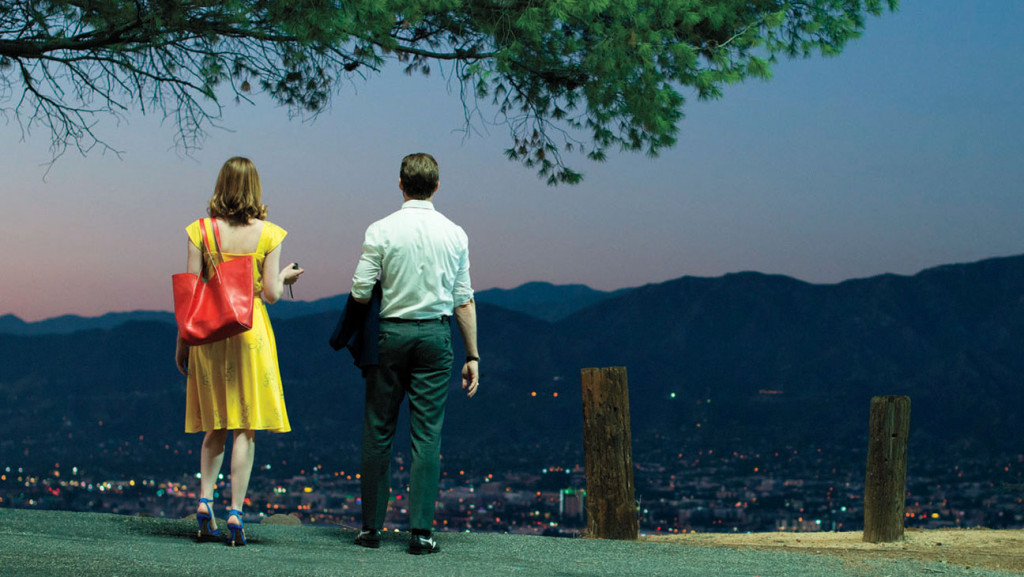
Similarly, the lighting and the colours in the background play an important part. One of the main reasons why ‘La La Land’ is such a colourful film, despite having most its scenes at night, is because it makes use of its surroundings in a very effective manner. The outdoor scenes have carefully been filmed during the twilight time when there is still enough light of the sun to colour the sky while allowing the impending darkness to bring out their texture. But that’s just the first half. The second half has a more pronounced difference between its day and night scenes, with the colours at night depending on artificial light to make a mark.
You might have also noticed how the lighting narrows down on the protagonists when they are in their intimate moments. The world slowly fades around them and they focus on their feelings, be it love, doubt, indulgence in their art, or reminiscing of good old times. All of Mia’s soliloquies and Sebastian’s performances, when they are doing it for themselves and no one else, are marked by the spotlight shining on them. The lighting allows them that privacy of thoughts, a safe space for them to express themselves. All the other auditions that Mia had given, she was doing it to be noticed by the people in front of her. It wasn’t something of her own. But in the final audition, she hadn’t prepared the lines given to her, it was what she felt. Even when she knew the audition might not turn out in her favour, she didn’t seem to be doing it for the casting directors, it was for herself. And that’s why it was the most effective.
The balance of dreams and reality is also brought about by the toning down of the romantic extravagance we see in the first half. Chance encounters, magical dates, falling in love with a stranger you stopped for because they were playing beautiful music- all these things are classic rom-com, or modern fairy tale, stuff. The second half is more grounded in reality; the irony is that it is when both of them are closer than ever to their dreams.
Music, A Character
Of all the things in ‘La La Land’, the acting, the screenplay, the dance, the costumes and what not, my most favourite part is the music. It is the heart and soul of the film, and if it hadn’t been so good, the film wouldn’t have worked either. Catchy tunes that stick in your head and the haunting melodies that bring out the romantic in you, it is no wonder ‘La La Land’ nabbed the awards in both Best Original Song and Best Original Music Score category.
Justin Hurwitz’s music became another character in the story; the lyrics foreshadowing the fates of the protagonists as much as they expressed their emotions. I, particularly, am obsessed with that certain piece which keeps repeating itself in all the important places. What do ‘Someone in the Crowd’, ‘Another Day of Sun’ and the ‘Epilogue’ song have in common? The next time you watch the film, look out for that piece of music. It always shows up at the places where dreams take precedence over reality. Either that or I am reading too much into it.
Nevertheless, being a musical, it is obvious ‘La La Land’ was so focused on syncing its melodies with the mood of its characters and their lives. The sync between the theme of the film and its tracks is evident from the very first scene. The lyrics of ‘Another Day of Sun’ focus on how the person left behind the love at a young age to pursue their dreams, i.e., Mia and Sebastian’s story. If you are too keen at such details, the plot would have been spoiled for you in the first five minutes itself! While the lyrics focus on the things you have to leave behind, the setting of the scene focuses on the harsh realities amidst which you need to keep it alive. What could be worse than a mile-long traffic jam, right? And in such heat! The time and place of irritation and frustration become the stage for people to dance and rejoice, the quest to find a way to your dreams while stuck in reality.
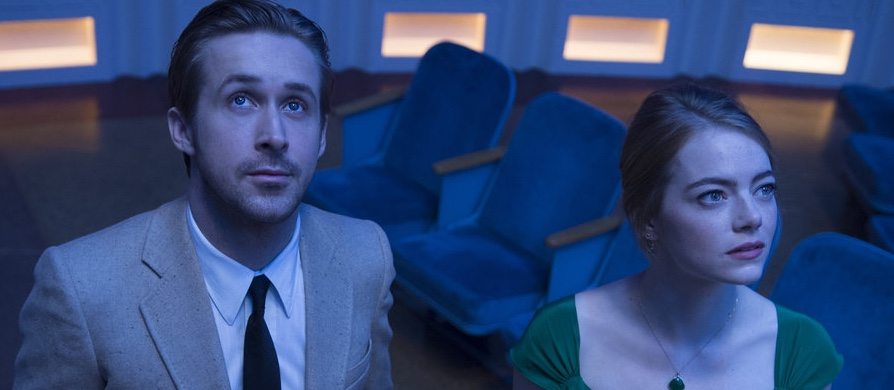
Similarly, ‘Someone in the Crowd’ foreshadows Mia’s future. Despite going to all those auditions and playing whatnot roles, she is picked out by the casting director who sat in the crowd (no matter how measly) while she was doing her own thing. The tone of the song also fluctuates with her doubts about trying again, her decision to move forward, wondering whether she’ll make it and get back to the world no matter how down she feels.
The two versions of ‘City of Stars’ also become a study for the characters’ thoughts. In his solo, Sebastian’s lyrics are about “a dream he cannot make true”. But the one he sings with Mia doesn’t have this line, and it focuses more on love. This is also the time when she has become more optimistic about her dream. She has left the job at the coffee shop and has been working on her play. He, on the other hand, has made a compromise with his own.
The music also becomes the tool for mirroring in the scenes where they run for each other. The same music that brought Mia into the club where she saw him playing for the first time repeats both the times when she decides to leave her boyfriend, Greg, to go for Sebastian and the time when he decides to leave his photo shoot and makes a run for her show. The music becomes instrumental in a lot of other ways. Every time you catch a repetition, notice its placement with the scene. Also, is it just me or does every piece of dreamy music end with the next scene rooted in reality?
The Ending: What Could Have Been?
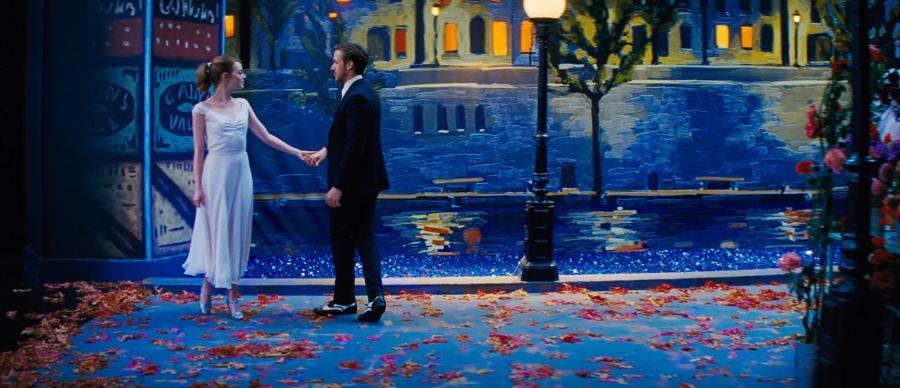
After her final audition, Mia and Sebastian discuss their future together. While she is still unsure about the results, he assures her that she is almost there now. For the shooting, she’ll have to go to Paris for a while and will have to give everything she’s got to this once in a lifetime opportunity. He decides to stay back and get his own dream on track. Whether they’ll meet again is left on the future. Even if they had agreed to keep their relationship going, Sebastian was right. When you give yourself to something, you can’t allow other things to hold you back. He has tasted success, though not the preferred one, in the form of his collaboration with Keith, and his dedication to the job is what tore them apart in the first place. Her dedication would do the same thing. So, they part ways affectionately and move on with their lives.
Five years later, Mia is a successful actress. The scene where she walks into the same coffee shop she had worked at, mirrors the scene at the beginning of the film, indicating how far she has come. She is the object of admiration now and the new barista aspires to be like her, just as she had aspired to be like the other actress she had served. It also gives us a hint of other dreams that are blooming around in the same place. The cycle continues.
Sebastian, too, has made his own dream a reality. Both of them are exactly where they wanted to be, albeit separately. She has built a life with someone else, while he continues to be single. This also shows us how consistent they are in their characters. She had always been the one to move forward, while he was the one who revered the things of the past. For him, his time with Mia was one of those things, and one could say that his continued bachelorhood is a result of this traditionalist side of his. He was never the one to settle for something less than the pure form of it. The one time he did so, it cost him his relationship, which is what was the purest form of love for him. He hadn’t found that again and so, he stayed single. More evidence for this comes from his fondness for mementoes of bygone eras. Be it the piano stool on which Hoagy Carmichael sat or the sign that Mia made for him. Both of them are a part of his club, like other relics that decorate it.
Finding each other, once again, across a crowded room, they are reminded of what they had all those years ago. The moment their eyes meet, Sebastian is startled for a moment, and then he sits down and plays a magnificent solo that starts with the melody that he was playing when he first met Mia. The film then goes into an alternate reality and the perfect version of the story where the two end up together. When you spend such a significant portion of your life in love with someone, you wonder what life would have been like with them. The same is true here.
The Final Scene
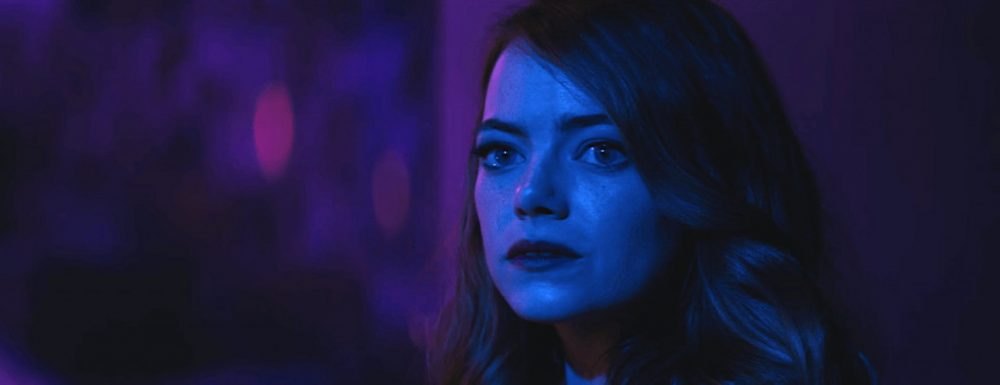
In the final scene of the film, as Mia is leaving the jazz bar she looks back at Sebastian. Their eyes meet. It seems as if both are trying guess what the other is feeling. And then after a beat, Sebastian nods. Mia smiles.
While the above moment lasts only for a few seconds, its significance can’t be overstated. Sebastian’s nod is a tacit acknowledgement of both his regret and her moving on. Mia’s smile can be interpreted as a tacit approval of what Sebastian has achieved and that she is happy with the choice she made. It’s important to note here that Mia is leading what seems like a happy married life, whereas Sebastian is single. This, combined with the fact that Seb chooses to play a tune that was an integral part of his time with Mia, proves that a certain part of him is still regretful of the fact that he is not with her. In the end, he probably realizes that it’s time to finally move on with his life.
Final Word
If there is one thing that ‘La La Land’ teaches you, it is that you can’t have all your dreams materialized. To achieve one, you might have to sacrifice another. Between their dreams and their love for each other, Mia and Sebastian had to sacrifice one thing to allow the other to happen. If you are one of those people who didn’t like the ending because it was sad, then perhaps you have mistaken the prime theme of the story to be love. It is a film about dreams; love is just something that came along the way. In the end, the dreams come true, and if that’s not a happy ending, then what is? Even if you don’t agree with me, you have to admit that the film might not have been as effective had it taken a different, more conventional route. Had the protagonists ended up together, the story would have never broken into reality. The film would have continued to be a dreamy tale of love. People tend to forget dreams after a while. Reality is what stays with them for the rest of their lives.

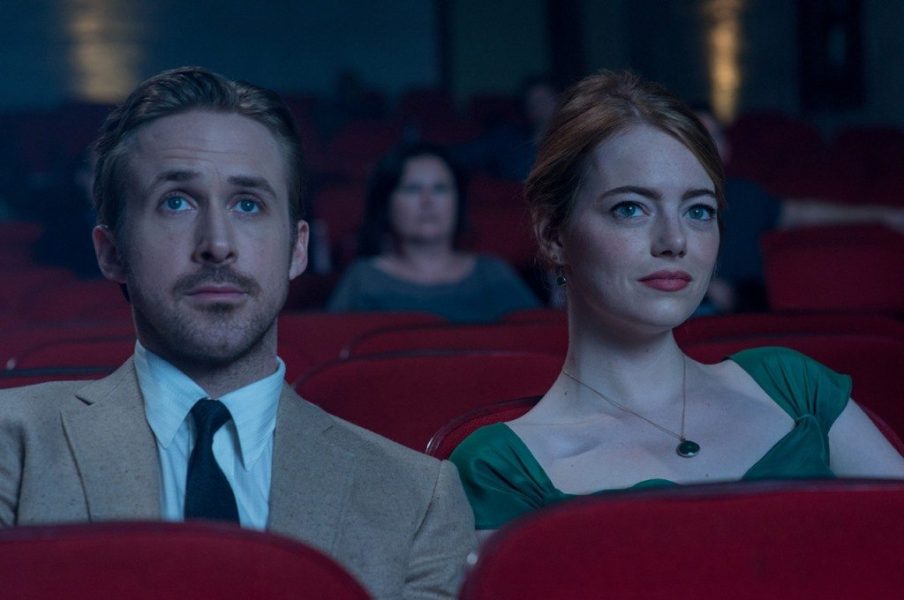
You must be logged in to post a comment.